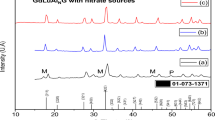Abstract
An in situ X-ray absorption spectroscopy (XAS) spectroelectrochemical study of aquocobalamin (system B12a-B12r-B12s) has been carried out in aqueous solutions buffered at different pH values. To the best of our knowledge, this is the first structural study of aquocobalamin at room temperature under controlled oxidation conditions. Most of the previous work was in fact performed using frozen samples chemically treated to produce the species. The spectroelectrochemical approach offers several advantages: (1) the reduction products may be studied without poisoning the system with chemical reductive reagents and (2) any possible variation of the oxidation state owing to the electrons produced by the incident beam is avoided as the electrode, under potentiostatic control, acts as a scavenger. The spectroelectrochemical approach, together with more careful data analysis, has led to an improved interpretation of the XAS data. These conditions were not met in previous works where the oxidation state was not controlled and multiple scattering contributions were not taken into account. The general shape of the XAS spectra of the different species is not greatly affected by pH. A signature for the base-off square-planar coordination has been evidenced for the Co(II) compound at basic pH. A new signature for Co(I), indicating square-planar coordination, has been identified on the experimental spectra and simulated in theoretical X-ray absorption near-edge structure (XANES) studies. The flexibility of the electrochemical approach, that permits to unambiguously establish the formal oxidation state, has led to very reliable values for energy shift and peak intensity variations. The experimental XANES and extended X-ray absorption fine structure (EXAFS) spectra with a very good signal-to-noise ratio have been processed using the GNXAS package that takes into account multiple scattering contributions. EXAFS and XANES independent analysis result in the same structural model. The reduction from Co(III) to Co(II) produces the most significant structural changes: the cobalt coordination number decreases from six to five, and the edge position shifts by 2.4±0.3 eV. In addition, the XANES spectra are strongly modified. The reduction from Co(II) to Co(I) produces mainly electronic effects with no apparent change of the coordination number. A discussion of the limits and potentialities of EXAFS in this type of study has also been included.
Similar content being viewed by others
Author information
Authors and Affiliations
Additional information
Received: 26 July 1999 / Accepted: 22 October 1999
Rights and permissions
About this article
Cite this article
Giorgetti, M., Ascone, I., Berrettoni, M. et al. In situ X-ray absorption spectroelectrochemical study of hydroxocobalamin. JBIC 5, 156–166 (2000). https://doi.org/10.1007/s007750050360
Issue Date:
DOI: https://doi.org/10.1007/s007750050360




